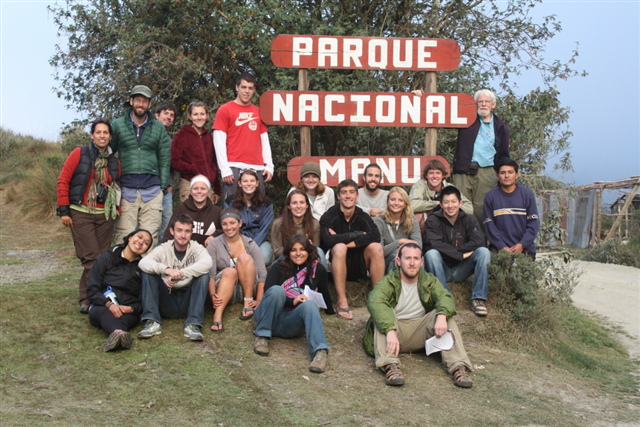
.JPG)
Note: With the exception of start and end dates, all dates and locations are subject to modification. Our program will be as close as possible to the itinerary detailed below, but be aware that sometimes circumstances beyond our control can require slight modifications. We will do our best to notify you if this happens.
Day 1: Cusco: Introduction, policies and expectations. Arrive from Seattle (via Lima), first meeting, preparation and logistics for first exploration trip, stay in Cusco at local hotel.
Day 2-3: Urubamba (Sacred Valley) Observation of western Andean Ecology and agricultural systems 1 hour AM drive from Cusco, stay in Urubamba at local hotel. Introduction to the ecology and biology of the site. Introduction to Andean agricultural systems and traditional activities (such as textiles, use of natural dyes). Learn field identification techniques for flora and fauna. Interaction and interviews with local communities. On evening of day 3 travel to Machu Picchu. Stay in a local hotel.
Day 4: Visit to Machu Picchu Whole day visit to famous Inca's lost city. Return to local hotel and spend the night there.
Day 5: Return to Cusco, Logistics and symposium. AM: trip back to Cusco. PM: Attending Andes-Amazon ecology and conservation mini-symposium given by Cusco-based researchers. Preparation for following exploration trip. Stay in Cusco at local hotel.
Day 6-14: Amazon lowlands, Cocha Cashu field station, minimum 2 days travel from Cusco, overland and by boat.
Beginning of in depth natural history exploration and skills.
Seminar topics during this part of the trip will also include:
- Hypotheses for patterns and origins of biodiversity along the altitudinal/latitudinal gradient - Function of biodiversity - Generating questions and hypotheses - Hypothesis testing, experimental design and statistical analysis - Discussions of independent research topics (with peers and instructors) and first presentation of research plans to instructors. - How to collect data, biases, and maintaining proper field notes -
Day 14, 15: To Wayqecha field station, cloud forest ecosystems.
Days will be split between time in the field collecting and analyzing data, visits to a neighboring community and primary school, and time in seminars and discussions covering the following:
-Tropical biodiversity in the Amazon - Evolutionary perspective on human behavior, cultural diversity, and Amazonian societies - comparing agroecological systems in the tropical Andes and Amazon -Threats to biodiversity and major challenges for conservation in the tropics -Writing a research paper -Preparing a research presentation-
On day 22 students will present their work in a day long student symposium. Final Celebration in the evening.
Day 23 Travel back to Cusco,
Day 24 to Cusco airport.
Accessibility and available facilities each locality:
All the proposed sites are accessible either by road, train, plane, or boat from the city of Cusco (3300 m) where the program will start and which will serve as a hub for other trips. Cusco can be reached either by road (20 hrs) or plane (1 hr) from Lima, the capital of Peru. The Urubamba Valley, locally known as the Sacred Valley (2600-2900 m), is about 1 hour drive from the city of Cusco and has plenty of facilities for food and lodging, and places to buy supplies if needed. MachuPicchu (1500m) is accessible by train service that leaves from Cusco. The fully equipped Wayquecha field station (2900 m), where we will likely stay for the cloud forest portion of the trip, is a 7-hour drive from Cusco and close to the native community of Sunchubamba. The Cocha Cashu field station, where we will likely stay in the Amazon basin, is 2 days by boat from the end of the Manu road, which is 12 hrs. by car from Cusco. Student activities during the program will be a combination of field work, visits to cultural and biological sites, discussions, attending seminars, giving presentations, and independent work on group projects.
For more information on some of the sites we will visit, check out the following websites:
Last modified: 12/28/2009 12:41 PM